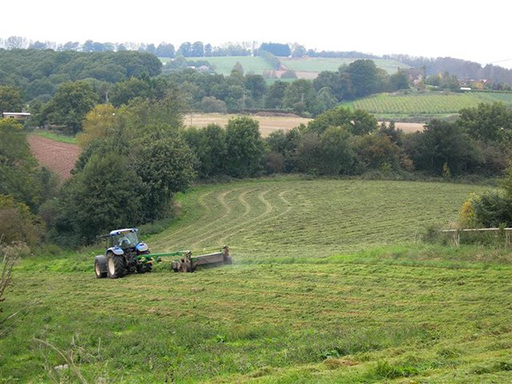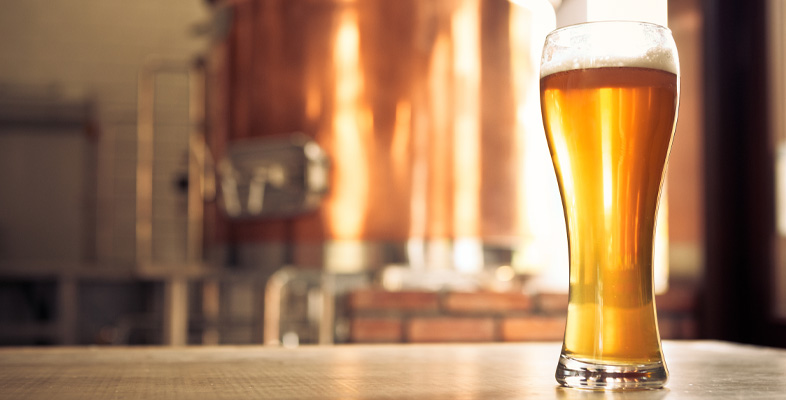2 Introduction to taste and smell
The senses of smell (olfaction) and taste (gustation) connect you directly with the external chemical environment in which you live and allow you to respond to chemical stimulants within that environment. These so-called ‘chemical senses’ are considered by many people to be less important than the other senses, at least in humans but, as you will see, the senses of smell and taste are central to modifying our behaviour and contributing to the overall sensory experience of our world.
In evolutionary terms, smell and taste are ancient senses. It seems likely that they developed in simple organisms as a way of detecting changes to the chemicals around them. Insects, amphibians and reptiles have particularly well-developed chemical senses. In mammals, smell and taste are used as a means of tracking prey, recognising territory, choosing a mate, enabling mother–infant recognition and avoiding predators, as well as locating food sources and determining their palatability.
Indeed, many of the odours that you are able to detect at low concentrations are those that signal potential food sources or are from material which can harm you if ingested (e.g. rotting food and waste materials). Similarly, there seems to be a close connection between your sense of taste and your nutritional requirements, as recognised in La Physiologie du goût, published in Paris in 1825 by the French gastronomist Jean-Anthelme Brillat-Savarin, who wrote:
Of all our senses, taste, such as Nature has created it, remains the one which, on the whole, gives us the maximum delight: … because, when we eat, we experience an indefinable and peculiar sensation of well-being, arising out of an instinctive awareness that through what we were eating we are repairing our losses and prolonging our existence.
It is not difficult to appreciate this connection between our sense of taste and the need to ‘repair our losses and prolong our existence’. If you are tired, perhaps because you have not eaten for some time or because you have been on a long walk, you may experience a craving for sweet foods. If you have undertaken more strenuous physical exercise, you may have found yourself needing to eat salty and savoury foods. A possible interpretation of these differing responses is that in the former you need to replenish energy stores whereas in the latter it is the salt, lost through sweat, and amino acids that need replacing.
The quotation above illustrates an important point of definition and it is appropriate to clarify this now. Brillat-Savarin refers to the experience of taste occurring when we eat but, in fact, the overall experience that occurs when eating is dependent on both taste and smell.
Can you estimate what percentage your sense of smell contributes towards your sensory appreciation of food and drink?
Indeed, it has been estimated that smell contributes up to 90% of our sensory appreciation of food and drink.
It is easy to demonstrate this by, for example, eating a banana while pinching your nostrils. This prevents the smell of the banana from entering the nasal cavity from the back of the mouth and stimulating your sense of smell. Eaten in this way, the banana ‘tastes’ rather bland.
Can you think of a situation when a change to your sense of smell appears to affect the ‘taste’ of food?
The classic example is when you have a cold which would block your nasal passages with mucus. Food doesn’t taste right.
In fact, what is actually affected is the ‘flavour’ – that is, the overall perception we experience when we eat and drink, which involves the senses of both taste and smell.
You have seen that our senses of smell and taste have developed to support our survival in terms of obtaining foods that our bodies need and avoiding dangerous substances. But it also seems that smell and taste – particularly smell – also appear to possess a uniquely evocative quality that may be linked to memory and emotions in a subconscious way. Is there any particular smell that reminds you of your childhood as illustrated, for example, in Figure 2?

Activity 2 The differences between smell and taste
Humans have developed two complementary systems for sampling the chemical environment – smell and taste. From what you know about these two senses, identify the differences in how taste and smell operate. Look at the statement in the left-hand column and add ‘taste’ or ‘smell’ to the right-hand column.
| Statement | Taste or smell? |
|---|---|
| Allows you to detect chemicals in the air – for example, perfume or the fragrance of a flower. | |
| Detects substances through direct contact with the solids and liquids. | |
| Is a direct indication as to whether or not solids or liquids are acceptable to eat and/or drink. | |
| Does not require you to be in contact with the source of the chemical. | |
| Helps you identify whether you should be attracted to, or repelled by, the source. | |
| Requires you to put something into your mouth. | |
| Can be detected at a distance. | |
| Cannot be experienced at distance. |
Discussion
Here are the correct answers:
| Statement | Taste or smell? |
|---|---|
| Allows you to detect chemicals in the air – for example, perfume or the fragrance of a flower. | Smell |
| Detects substances through direct contact with the solids and liquids. | Taste |
| Is a direct indication as to whether or not solids or liquids are acceptable to eat and/or drink. | Taste |
| Does not require you to be in contact with the source of the chemical. | Smell |
| Helps you identify whether you should be attracted to, or repelled by, the source. | Smell |
| Requires you to put something into your mouth. | Taste |
| Can be detected at a distance. | Smell |
| Cannot be experienced at distance. | Taste |
- Your ability to smell allows you to detect chemicals in the air – for example, perfume or the fragrance of a flower – and because your nose does not have to be in contact with the source of the odour, they can be detected at a distance (in some instances, hundreds of metres away). Your ability to smell seems to help you identify whether you should be attracted to, or repelled by, whatever is the source of the smell.
- Your ability to taste, however, requires you to put something into your mouth, so you need to be in direct contact with the chemicals that are ‘tasted’. Taste is not something that can be experienced at a distance. In most cases, taste detects substances present in the solids and liquids you require as foods and informs you as to whether or not these are acceptable to eat.
There is also thought to be a third chemical sense, which combines both smell and taste. What is this called?
A third chemical sense, combining both smell and taste, is termed ‘flavour’.
You will now learn more about the science behind how smell actually works.
